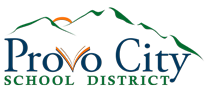Last modified: October 2, 2023
4160 Procedure 2: Diapering and Toileting
Special Education and Related Services for Eligible Students: Toileting/Diapering
Students may require diapering or help toileting due to developmental level or health, physical or cognitive disabilities. These students may require diapering or toileting on a scheduled or on an “as needed” basis. These tasks should be performed with dignity and respect for the student in a private and safe setting. Students cannot be denied entry into or removed from any educational program if they have not mastered this skill.
Due to the wide range of disabilities, both physical and cognitive, and the various ages and physical sizes of students who require these services, these procedures should be tailored to each individual student’s specific needs. The school nurse, physical/occupational therapist, teacher or parent can provide training. The student may have special needs requiring specific procedures. This information should be included in the IEP or 504 plan.
Staff involved in changing diapers or toileting have the potential to spread germs and diseases. Following proper procedures and room set-up will reduce the risk of spreading illnesses. All staff involved in toileting and/or diapering must complete the Blood-borne Pathogen Training yearly.
Parents are responsible for supplying diapers, wipes, a change of clothing and other necessary supplies for their child. District will supply approved cleaners/wipes for surfaces, gloves and other protective equipment as needed.
Staff involved in diapering/toileting should receive the hepatitis B vaccine.
Staff who prepare or serve food may not change diapers or assist in toilet training.
Staff shall check each student’s diaper at least once every two hours and change the diaper promptly if it is wet or soiled. If the student is sleeping, the diaper must be checked when the student awakes.
The policy and procedures must be posted in the diaper changing area.
It is strongly recommended that two adults always be present when performing these tasks. Also, that the diapering/bathrooming is performed by an adult of the same gender of the child.
Diapering Procedure
- A student’s diaper should be changed when wet or soiled and checked prior to bussing/end-of-day pick up.
- All necessary equipment and supplies should be easily accessible in the changing area.
- Talk to the student about what you are doing.
- Bring the student to the changing area.
- Wear appropriate Personal Protective Equipment (PPE)—gloves (sleeves and apron if necessary).
- Prepare the changing area by wiping with a sanitized/disinfectant wipe and/or placing protective paper on the changing surface.
- Transfer student to changing surface. The plan for doing this should be discussed with the parent prior to diapering the first time.
- Remove soiled diaper and place in a covered waste receptacle.
- Clean student using wipes or soap and water.
- Dispose of soiled gloves and put on a clean pair of gloves.
- Make sure the student’s clothing is clean and dry. If not, change the student’s clothing and send home soiled clothing in a plastic bag.
- Place the clean diaper on the student.
- Transfer the student from the changing area.
- Remove the changing paper and clean the surface with district-approved cleaner or wipes.
- Use approved hand-washing techniques to clean your hands.
- The soiled/wet diaper container should be cleaned and sanitized daily.
- Cleaning supplies should be kept out of reach of students.
Toileting Procedure
- Escort the student to bathroom.
- Talk to the student about what you are doing.
- Put on PPE: gloves (protective sleeves or apron if necessary).
- Prepare the toilet by wiping it with a sanitized/disinfectant wipe and/or placing protective paper.
- Assist the student with clothing.
- Transfer and/or assist the student to the toilet.
- If required, stabilize the student on the toilet seat.
- Clean the student when finished.
- Make sure the student’s clothing is clean and dry. If not, change the student’s clothing and send home soiled clothing in a plastic bag.
- Remove the gloves and dispose of the soiled gloves following Universal Precautions procedures.
- Transfer the student from the toilet.
- Supervise children in how to correctly wash their hands after using the bathroom.
- Clean your hands using approved hand-washing techniques.
Legal References & Synopsis
USBE Special Education Rules I.E.38
- Related Services for students with IEPs
Utah Code R392-200-7 (4), (5)
- Diaper Changing
